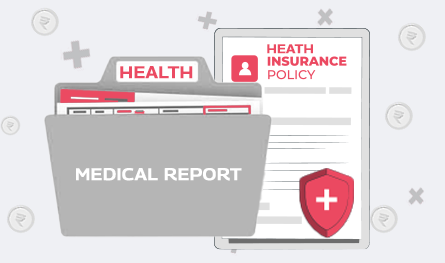6 Ratios to Know While Buying Insurance Policy
.png)
For a first-time buyer, it becomes difficult to choose an insurance policy, especially because of the availability of numerous insurers and plans with a wide range of features and benefits. In this post, we are looking at the different ratios that are considered while buying insurance.
.png)
If you look at the availability of insurance providers in the market, you are bound to get confused while choosing from among the myriad list. Also, it makes the process of insurance buying difficult for common people. Thus, to help you make the difficult process of choosing an insurer smooth, we are discussing six ratios in this post which will support you in making an informed decision to pick the right insurer.
1. Persistency Ratio
The persistency ratio of life insurance companies in India determines the number of insurance policies for which premium has been made on time during the policy year as compared to the total number of policies that an insurer has sold. Hence, the persistency ratio calculation indicates the number of policyholders who pay their premium on a timely basis for their insurance plans purchased from the insurer.
With this figure, one can assume the number of consumers that stay with the insurer and for how long. This way, you can assume to an extent the client satisfaction level offered by the insurance company. This is because if there are more clients who have stopped paying premiums for plans it might indicate the dissatisfaction of clients.
2. Solvency Ratio
In case of term insurance plan, the insurer is supposed to pay a certain amount of coverage benefit or sum assured to the beneficiary or nominee of the insured in the event of sudden demise of the policyholder. Now, consider that due to any unavoidable circumstances such as natural disaster or riot etc, the insurer receives a greater number of claims at a time than expected. In such a scenario, the financial capability of the insurer to payback for each and every policy is determined by the solvency ratio.
Thus, the solvency ratio of an insurance provider means the financial ability of the company to pay what they committed for your term life insurance coverage. Hence, to check the paying back capacity of the insurer, you may refer to its solvency ratio. If the ratio is high, it means the insurer is financially strong.
3. Combined Ratio
Combined ratio is the one that estimates the finances that an insurer pays as dividends, expenses, losses etc. In case of losses, the policy writing discipline of the insurer can be estimated. On the other hand, the ratio of expenditure indicates the effectiveness of the insurer to find out how well it uses its assets to endorse top-line progress.
This ratio allows policyholders to understand the total estimate of profit of an insurer and thus, is regarded as an important indicator to check before buying a policy. This ratio is available as a percentage value and if the insurer shows 100 % combined ratio formula, it means they are creating underwriting gain, while if it is above 100%, it means the insurer is paying more revenue as claims than what they are earning as premiums.
4. Incurred claims ratio
An Incurred Claim Ratio (ICR) represents the ratio of total claim amount that has been settled by the insurer as compared to the total premium amount received during a financial year. Hence, this ratio reflects the financial stability of the insurer in terms of settling claims. If the incurred claim ratio of an insurer is more than 100%, it means they are paying more claim payments than what they are receiving as premium amounts. Similarly, if the ratio is below 100%, it means the insurer is enjoying clear gain from collected premiums as compared to what they are paying as claims.
5. Commission expense ratio
This ratio specifies how much percent of premium is paid on commission. The premium you pay might be influenced by this percentage. If the percentage of commission cost is more, it will result in smaller discounts and in turn charging more premiums. On the other hand, in case of low premiums they make the cost of commission expense ratio low. It actually depends on the insurer if they would transfer this cost to customers or keep the premiums constant.
6. Claim settlement ratio
A Claim Settlement Ratio (CSR) is the most common ratio that we generally come across while talking about insurance companies. CSR is the total claims that are settled by an insurer as compared to the total claims filed by insurance policyholders during a fiscal year.
For instance, suppose the life insurance claim settlement ratio of a particular insurer is 92%. This signifies that the insurer settled over 92 claims from the 100 claims being filed in total.
The CSR ratio indicates how good the insurance company is in settling claims. The higher the CSR, the greater the chances of getting your claims settled. The CSR of an insurer can be checked online on the IRDA’s website.

Author Bio
Paybima Team
Paybima is an Indian insurance aggregator on a mission to make insurance simple for people. Paybima is the Digital arm of the already established and trusted Mahindra Insurance Brokers Ltd., a reputed name in the insurance broking industry with 17 years of experience. Paybima promises you the easy-to-access online platform to buy insurance policies, and also extend their unrelented assistance with all your policy related queries and services.
Latest Post

So, you have finally decided to stop relying on luck and start looking into health insurance. Good call. But just when you feel proud of that adulting moment, a new term pops up and takes the wind out of your sails.


You finally found a health insurance plan a few years ago, stuck with it, paid your premiums on time, and maybe even avoided a few samosas in the name of staying healthy. But now things are changing. Maybe your insurer raised the premium without offering anything new. Or the service has gone from decent to downright annoying. Or perhaps another provider is offering better features, more hospitals, and friendlier terms.

.png)
Every time you take your bike out for a spin, there are a few prerequisites to check. You need to wear your helmet, followed by adequate safety gear, and ensure that you have a valid bike insurance policy. Once you have these three, you can munch miles without worries.

.png)
Due to their affordability, extreme comfort, and alluring features, two-wheelers are the prime mode of communication on the hustle-bustle roads of India. Several statistics have also claimed that nearly 18 Crore two-wheelers run on various Indian roads.




